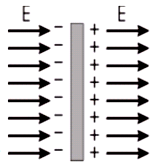
تاريخ الفيزياء

علماء الفيزياء


الفيزياء الكلاسيكية

الميكانيك

الديناميكا الحرارية


الكهربائية والمغناطيسية

الكهربائية

المغناطيسية

الكهرومغناطيسية


علم البصريات

تاريخ علم البصريات

الضوء

مواضيع عامة في علم البصريات

الصوت


الفيزياء الحديثة


النظرية النسبية

النظرية النسبية الخاصة

النظرية النسبية العامة

مواضيع عامة في النظرية النسبية

ميكانيكا الكم

الفيزياء الذرية

الفيزياء الجزيئية


الفيزياء النووية

مواضيع عامة في الفيزياء النووية

النشاط الاشعاعي


فيزياء الحالة الصلبة

الموصلات

أشباه الموصلات

العوازل

مواضيع عامة في الفيزياء الصلبة

فيزياء الجوامد


الليزر

أنواع الليزر

بعض تطبيقات الليزر

مواضيع عامة في الليزر


علم الفلك

تاريخ وعلماء علم الفلك

الثقوب السوداء


المجموعة الشمسية

الشمس

كوكب عطارد

كوكب الزهرة

كوكب الأرض

كوكب المريخ

كوكب المشتري

كوكب زحل

كوكب أورانوس

كوكب نبتون

كوكب بلوتو

القمر

كواكب ومواضيع اخرى

مواضيع عامة في علم الفلك

النجوم

البلازما

الألكترونيات

خواص المادة


الطاقة البديلة

الطاقة الشمسية

مواضيع عامة في الطاقة البديلة

المد والجزر

فيزياء الجسيمات


الفيزياء والعلوم الأخرى

الفيزياء الكيميائية

الفيزياء الرياضية

الفيزياء الحيوية

الفيزياء العامة


مواضيع عامة في الفيزياء

تجارب فيزيائية

مصطلحات وتعاريف فيزيائية

وحدات القياس الفيزيائية

طرائف الفيزياء

مواضيع اخرى
Conductors in electrostatic equilibrium
المؤلف:
المؤسسة العامة للتعليم الفني والتدريب المهني
المصدر:
مقدمة عن علم الكهربية الساكنة
الجزء والصفحة:
...
15-2-2017
2945
Conductors in electrostatic equilibrium
A good electrical conductor, such as copper, contains charges (electrons) that are free to move within the material. When there is no net motion of charges within the conductor, the conductor is in electrostatic equilibrium
Conductor in electrostatic equilibrium has the following properties:
1. Any excess charge on an isolated conductor must reside entirely on its surface. (Explain why?) The answer is when an excess charge is placed on a conductor, it will set-up electric field inside the conductor. These fields act on the charge carriers of the conductor (electrons) and cause them to move i.e. current flow inside the conductor. These currents redistribute the excess charge on the surface in such away that the internal electric fields reduced to become zero and the currents stop, and the electrostatic conditions restore.
2. The electric field is zero everywhere inside the conductor. (Explain why?) Same reason as above
In figure 1.1 it shows a conducting slab in an external electric field E. The charges induced on the surface of the slab produce an electric field, which opposes the external field, giving a resultant field of zero in the conductor.

Figure 1.1
Steps which should be followed in solving problems:
1. The gaussian surface should be chosen to have the same symmetry as the charge distribution.
2. The dimensions of the surface must be such that the surface includes the point where the electric field is to be calculated.
3. From the symmetry of the charge distribution, determine the direction of the electric field and the surface area vector dA, over the region of the gaussian surface.
4. Write E. dA as E dA cosθ and divide the surface into separate regions if necessary.
5. The total charge enclosed by the gaussian surface is dq = ∫dq, which is represented in terms of the charge density (dq = λ dx for line of charge, dq = σdA for a surface of charge, dq = ρ dv for a volume of charge).
 الاكثر قراءة في الكهربائية
الاكثر قراءة في الكهربائية
 اخر الاخبار
اخر الاخبار
اخبار العتبة العباسية المقدسة

الآخبار الصحية















 قسم الشؤون الفكرية يصدر كتاباً يوثق تاريخ السدانة في العتبة العباسية المقدسة
قسم الشؤون الفكرية يصدر كتاباً يوثق تاريخ السدانة في العتبة العباسية المقدسة "المهمة".. إصدار قصصي يوثّق القصص الفائزة في مسابقة فتوى الدفاع المقدسة للقصة القصيرة
"المهمة".. إصدار قصصي يوثّق القصص الفائزة في مسابقة فتوى الدفاع المقدسة للقصة القصيرة (نوافذ).. إصدار أدبي يوثق القصص الفائزة في مسابقة الإمام العسكري (عليه السلام)
(نوافذ).. إصدار أدبي يوثق القصص الفائزة في مسابقة الإمام العسكري (عليه السلام)


















